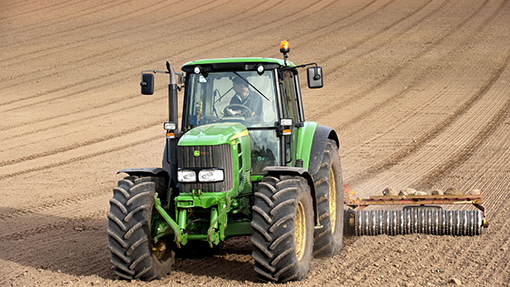Scots win concessions on CAP greening rules

Cereal growers in Scotland have won important concessions on greening rules imposed by the Scottish government.
NFU Scotland (NFUS) welcomed the Scottish government’s latest announcement on greening details, which includes delaying the requirement to grow more than one nitrogen-fixing crop until 2016. NFUS said that condition would make the growing of these crops a viable option for Scottish growers.
The new rules came in the wake of last week’s crunch meeting between the union and rural affairs secretary Richard Lochhead.
See also: Growers in tense meeting over greening rules
NFUS president Nigel Miller said the government’s clarification around areas such as fallow, catch crops and green cover helped ease the growing frustration that farmers have had over the speed with which information on greening has been coming forward. And he urged the Scottish government to write to farmers and lay out, in simple terms, what they need to do to meet their greening obligations.
“Scotland’s farmers – both arable and the more intensive livestock and dairy producers – are struggling to comprehend the complexity that complying with greening measures presents,” he said. “We recognise that greening must deliver for the environment but it must also work on farm and be simple to audit.
“Buffer strips and field margins will make a meaningful contribution to all those priorities. However, a key part of the review process must mean the introduction in 2016 of conversion factors to make delivery and audit robust.”
The Scottish government’s rural affairs secretary, Richard Lochhead, who has been under pressure to satisfy the demands of the green lobby as well as farmers, claimed the new greening measures would provide more habitat for terrestrial bird populations and more food for pollinators like bees.
Mr Lochhead committed his government to a review process before 2016 in line with EU commissioner elect Phil Hogan’s simplification agenda and announced that the Scottish government is to commission new research into farming and the environment in Scotland.
Vicki Swales, head of land use policy at RSPB Scotland, welcomed the commitment to new research but said that the negative reaction of NFUS to greening measures did little for the image of Scottish farming.
She added: “Let’s be clear, farmers have a wide range of options to meet the greening requirements and, in return for doing so, will receive a substantial payment from the taxpayer. Mr Lochhead has been more than fair in recognising farmers’ concerns while also trying to help the environment.”
The latest greening measures announced include:
- Under cross-compliance, or good agricultural and environmental condition (GAEC) requirements in Scotland, farmers must not plough or apply fertiliser or pesticides (except for spot-treatment for injurious weeds) within two metres of the centre line of a hedge or the top of the bank of a watercourse/water body. The Scottish government has clarified the new GAEC rules on cultivation next to hedges will only come into force for crops sown after 1 January 2015
- A mandatory European one-month extension to the no-cutting period for hedges during the bird-nesting season, which will now run from 1 March to 31 August.
- A European requirement that farmers must not burn stubble except for plant health purposes – a practice that is no longer common in Scotland
- A significant reduction in the number of new cross-compliance requirements from Europe. As a result, the overall number of Scottish GAEC requirements will reduce from 21 to seven
- Fallow for ecological focus area (EFA) purposes must be set aside between 15 January and 15 July
- Spring cereal crop undersown with grass will count under the Catch Crops category of EFAs – an important point for many livestock producers with some arable area
- The requirement to grow more than one nitrogen-fixing crop if it is to count as EFA will apply from 2016.
